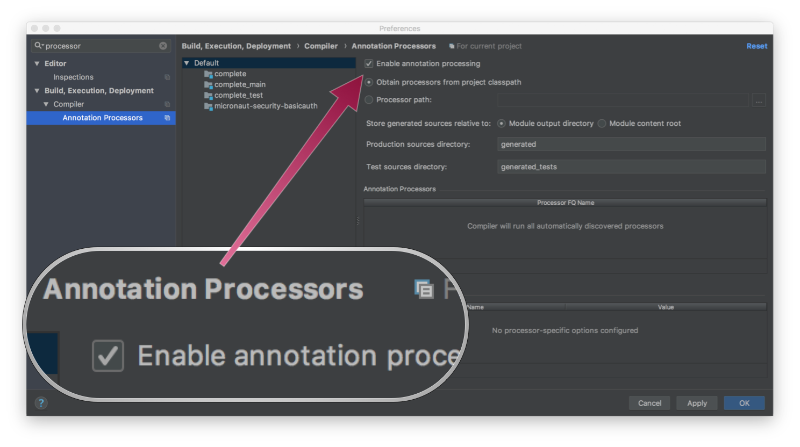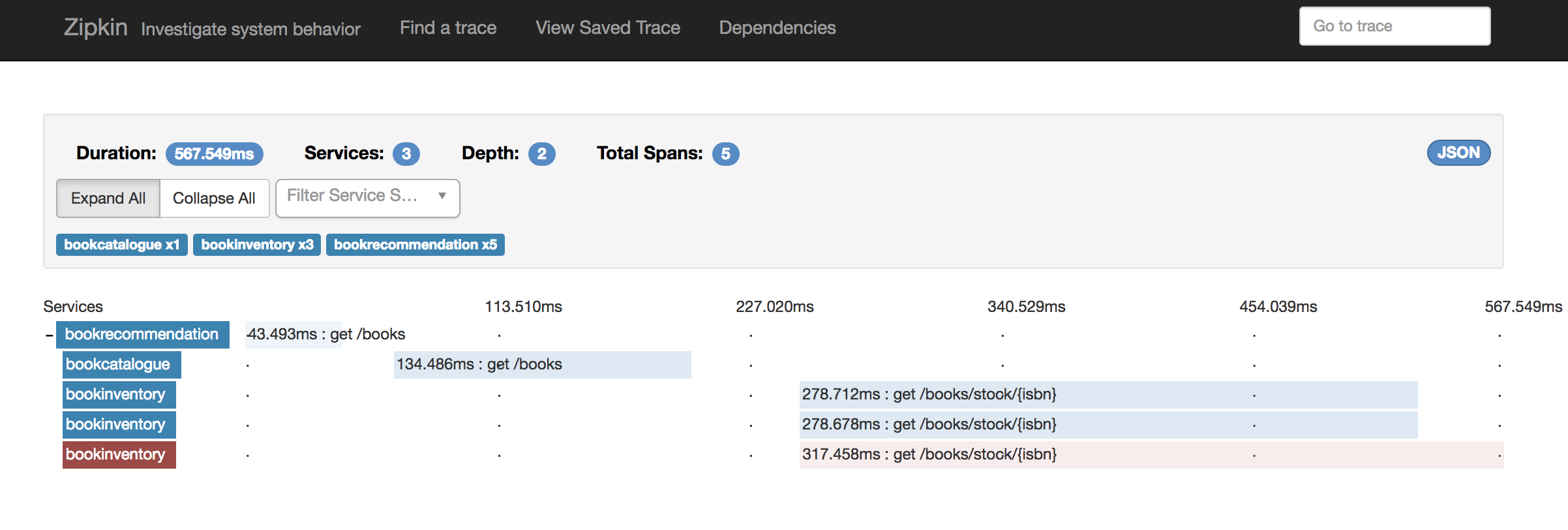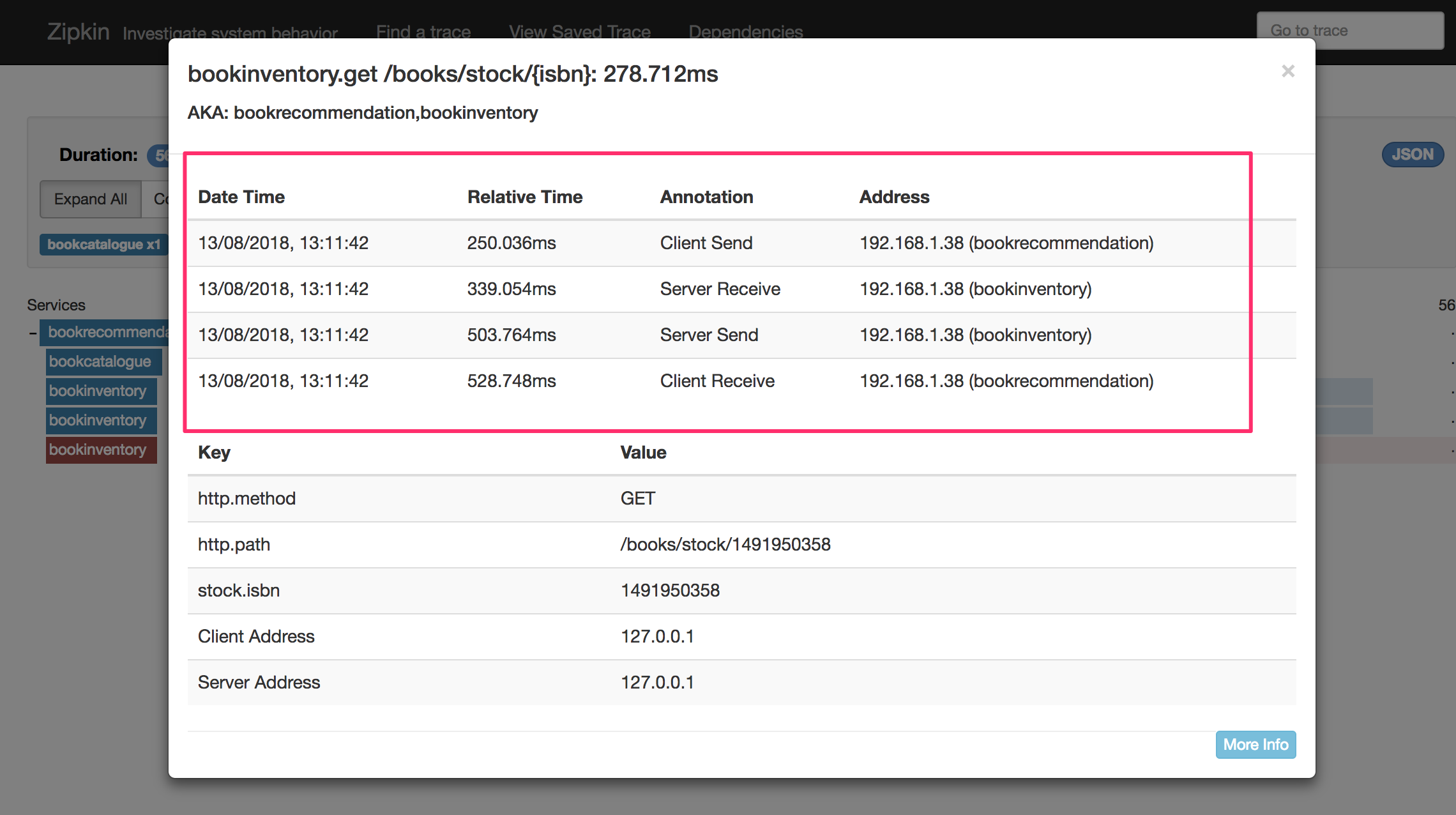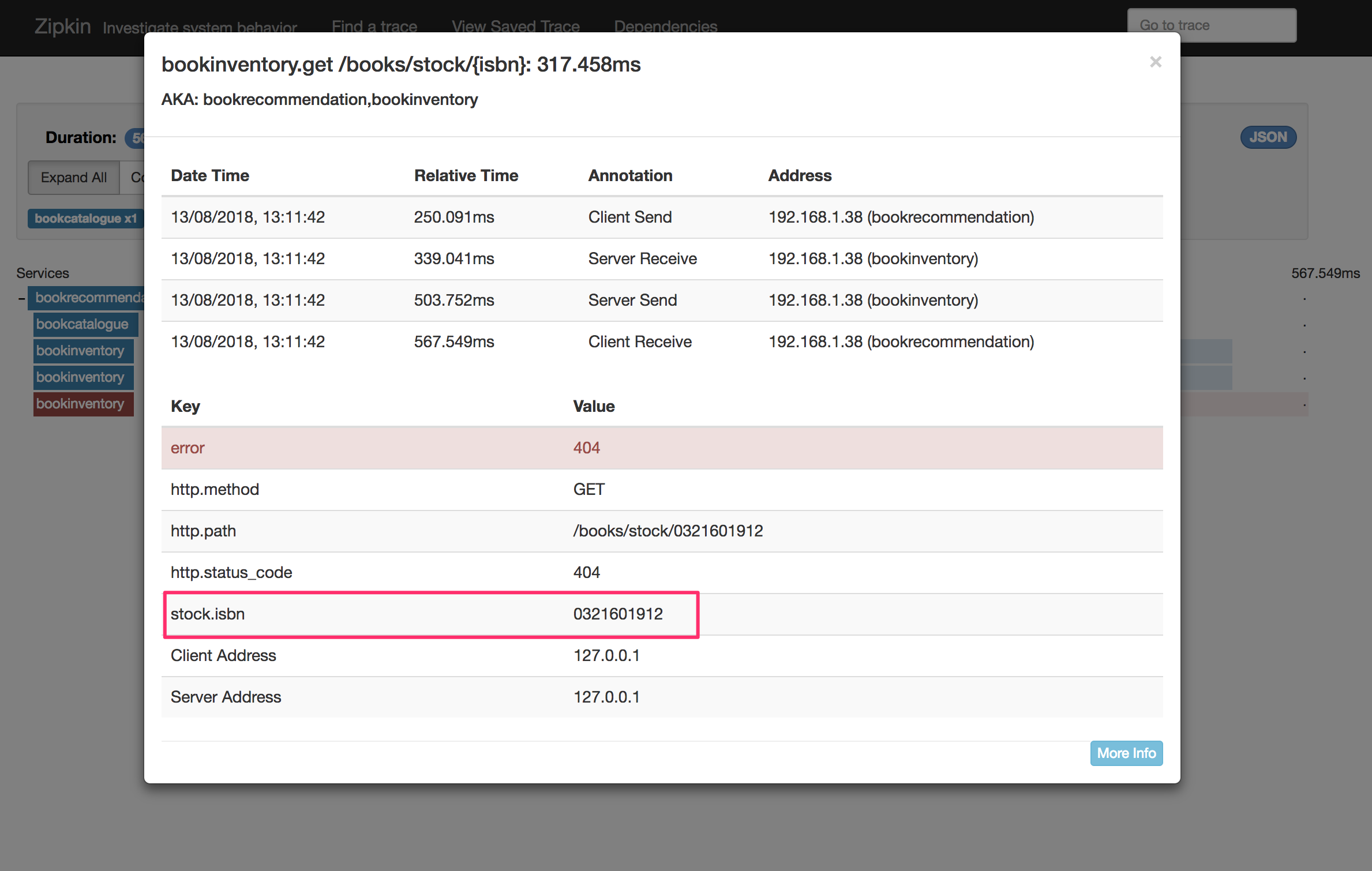Microservices distributed tracing with Zipkin and Micronaut
Use Zipkin distributed tracing to investigate the behaviour of your Micronaut apps.
Authors: Sergio del Amo
Micronaut Version: 2.5.0
1. Getting Started
In this guide, we are going to integrate Zipkin in a Micronaut app composed of three microservices.
Zipkin is a distributed tracing system. It helps gather timing data needed to troubleshoot latency problems in microservice architectures. It manages both the collection and lookup of this data.
You will discover how Micronaut eases Zipkin integration.
2. What you will need
To complete this guide, you will need the following:
-
Some time on your hands
-
A decent text editor or IDE
-
JDK 1.8 or greater installed with
JAVA_HOMEconfigured appropriately
3. Solution
We recommend that you follow the instructions in the next sections and create the app step by step. However, you can go right to the completed example.
-
Download and unzip the source
4. Writing the app
To learn more about this sample app read Consul and Micronaut - Microservices service discovery guide. The application contains three microservices.
-
bookcatalogue- It returns a list of books. It uses a domain consisting of a book name and isbn. -
bookinventory- It exposes an endpoint to check whether a book has sufficient stock to fulfil an order. It uses a domain consisting of a stock level and isbn. -
bookrecommendation- It consumes previous services and exposes and endpoint which recommends book names which are in stock.
The bookcatalogue service consumes endpoints exposed by the other services. The following image illustrates the application flow:
A request to bookrecommendation (http://localhost:8080/books) triggers several requests through our microservices mesh.
If you are using Java or Kotlin and IntelliJ IDEA, make sure you have enabled annotation processing.

5. Zipkin and Micronaut
5.1. Install Zipkin via Docker
The quickest way to start Zipkin is via Docker:
$ docker run -d -p 9411:9411 openzipkin/zipkin5.2. Book catalogue
Add tracing dependency.
implementation("io.micronaut:micronaut-tracing")Also, to send tracing spans to Zipkin the minimal configuration requires you add the following dependencies:
implementation("io.opentracing.brave:micronaut-tracing")
runtimeOnly("io.zipkin.brave:brave-instrumentation-http")
runtimeOnly("io.zipkin.reporter:zipkin-reporter")Append to bookcatalogue service application.yml the following snippet:
tracing:
zipkin:
http:
url: http://localhost:9411
enabled: true
sampler:
probability: 1 (1)| 1 | Trace 100% of requests. |
In production, you will probably want to trace a smaller percentage of the requests. However, in order to keep this tutorial easy, we set it to trace 100%.
Disable distributed tracing in tests:
tracing:
zipkin:
enabled: false5.3. Book inventory
Add tracing dependency.
implementation("io.micronaut:micronaut-tracing")Also, to send tracing spans to Zipkin the minimal configuration requires you add the following dependencies:
implementation("io.opentracing.brave:micronaut-tracing")
runtimeOnly("io.zipkin.brave:brave-instrumentation-http")
runtimeOnly("io.zipkin.reporter:zipkin-reporter")Append to bookinventory service application.yml the following snippet:
tracing:
zipkin:
http:
url: http://localhost:9411
enabled: true
sampler:
probability: 1 (1)| 1 | Trace 100% of requests. |
In production, you will probably want to trace a smaller percentage of the requests. However, in order to keep this tutorial easy, we set it to trace 100%.
Disable distributed tracing in tests:
tracing:
zipkin:
enabled: falseAnnotate BookController method with @ContinueSpan and the method parameter with @SpanTag:
package example.micronaut
import io.micronaut.http.MediaType
import io.micronaut.http.annotation.Controller
import io.micronaut.http.annotation.Get
import io.micronaut.http.annotation.Produces
import io.micronaut.tracing.annotation.ContinueSpan
import io.micronaut.tracing.annotation.SpanTag
import java.util.Optional
import javax.validation.constraints.NotBlank
@Controller("/books")
open class BooksController {
@Produces(MediaType.TEXT_PLAIN)
@Get("/stock/{isbn}")
@ContinueSpan (1)
open fun stock(@SpanTag("stock.isbn") @NotBlank isbn: String): Boolean? { (2)
return bookInventoryByIsbn(isbn).map { (_, stock) -> stock > 0 }.orElse(null)
}
private fun bookInventoryByIsbn(isbn: String): Optional<BookInventory> {
if (isbn == "1491950358") {
return Optional.of(BookInventory(isbn, 4))
} else if (isbn == "1680502395") {
return Optional.of(BookInventory(isbn, 0))
}
return Optional.empty()
}
}| 1 | The @ContinueSpan annotation will continue an existing span, wrapping the method call or reactive type. |
| 2 | The @SpanTag annotation can be used on method arguments to include the value of each argument within a Span’s tags. When you use @SpanTag you need either to annotate the method with @NewSpan or @ContinueSpan |
5.4. Book recommendation
Add tracing dependency.
implementation("io.micronaut:micronaut-tracing")Also, to send tracing spans to Zipkin the minimal configuration requires you add the following dependencies:
implementation("io.opentracing.brave:micronaut-tracing")
runtimeOnly("io.zipkin.brave:brave-instrumentation-http")
runtimeOnly("io.zipkin.reporter:zipkin-reporter")Append to bookrecommendation service application.yml the following snippet:
tracing:
zipkin:
http:
url: http://localhost:9411
enabled: true
sampler:
probability: 1 (1)| 1 | Trace 100% of requests. |
In production, you will probably want to trace a smaller percentage of the requests. However, in order to keep this tutorial easy, we set it to trace 100%.
Disable distributed tracing in tests:
tracing:
zipkin:
enabled: false6. Running the app
Run bookcatalogue microservice:
To run the application execute ./gradlew run.
...
14:28:34.034 [main] INFO io.micronaut.runtime.Micronaut - Startup completed in 499ms. Server Running: http://localhost:8081Run bookinventory microservice:
To run the application execute ./gradlew run.
...
14:31:13.104 [main] INFO io.micronaut.runtime.Micronaut - Startup completed in 506ms. Server Running: http://localhost:8082Run bookrecommendation microservice:
To run the application execute ./gradlew run.
...
14:31:57.389 [main] INFO io.micronaut.runtime.Micronaut - Startup completed in 523ms. Server Running: http://localhost:8080You can run a cURL command to test the whole application:
$ curl http://localhost:8080/books
[{"name":"Building Microservices"}You can then navigate to http://localhost:9411 t to access the Zipkin UI.
The previous request generates a trace composed by 5 spans.

In the previous image, you can see the requests to bookinventory are done in parallel.
You can see the details if you click the span:

In the previous image, you can see that:
-
Whenever a Micronaut HTTP client executes a new network request, a span is involved.
-
Whenever a Micronaut Server receives a request, a span is involved.
The stock.isbn tags that we configured with @SpanTag is present as shown in the next image:

7. Generate a Micronaut app’s Native Image with GraalVM
We are going to use GraalVM, the polyglot embeddable virtual machine, to generate a Native image of our Micronaut application.
Native images compiled with GraalVM ahead-of-time improve the startup time and reduce the memory footprint of JVM-based applications.
Use of GraalVM’s native-image tool is only supported in Java or Kotlin projects. Groovy relies heavily on
reflection which is only partially supported by GraalVM.
|
7.1. Native Image generation
The easiest way to install GraalVM is to use SDKMan.io.
# For Java 8
$ sdk install java 21.1.0.r8-grl
# For Java 11
$ sdk install java 21.1.0.r11-grlYou need to install the native-image component which is not installed by default.
$ gu install native-imageTo generate a native image using Gradle run:
$ ./gradlew nativeImageThe native image will be created in build/native-image/application and can be run with ./build/native-image/application
It is also possible to customize the name of the native image or pass additional parameters to GraalVM:
nativeImage {
args('--verbose')
imageName('mn-graalvm-application') (1)
}| 1 | The native image name will now be mn-graalvm-application |
Start the native images for the three microservices and run the same curl request as before to check that everything works with GraalVM.
8. Next steps
As you have seen in this tutorial, without any annotations you get distributing tracing up-and-running fast with Micronaut.
Micronaut includes several annotations to give you more flexibility. We introduced the @ContinueSpan, @SpanTag annotations.
Also, you have at your disposal the @NewSpan annotation which will create a new span, wrapping the method call or reactive type.
Make sure to read more about Tracing with Zipkin inside Micronaut.
9. Help with Micronaut
Object Computing, Inc. (OCI) sponsored the creation of this Guide. A variety of consulting and support services are available.